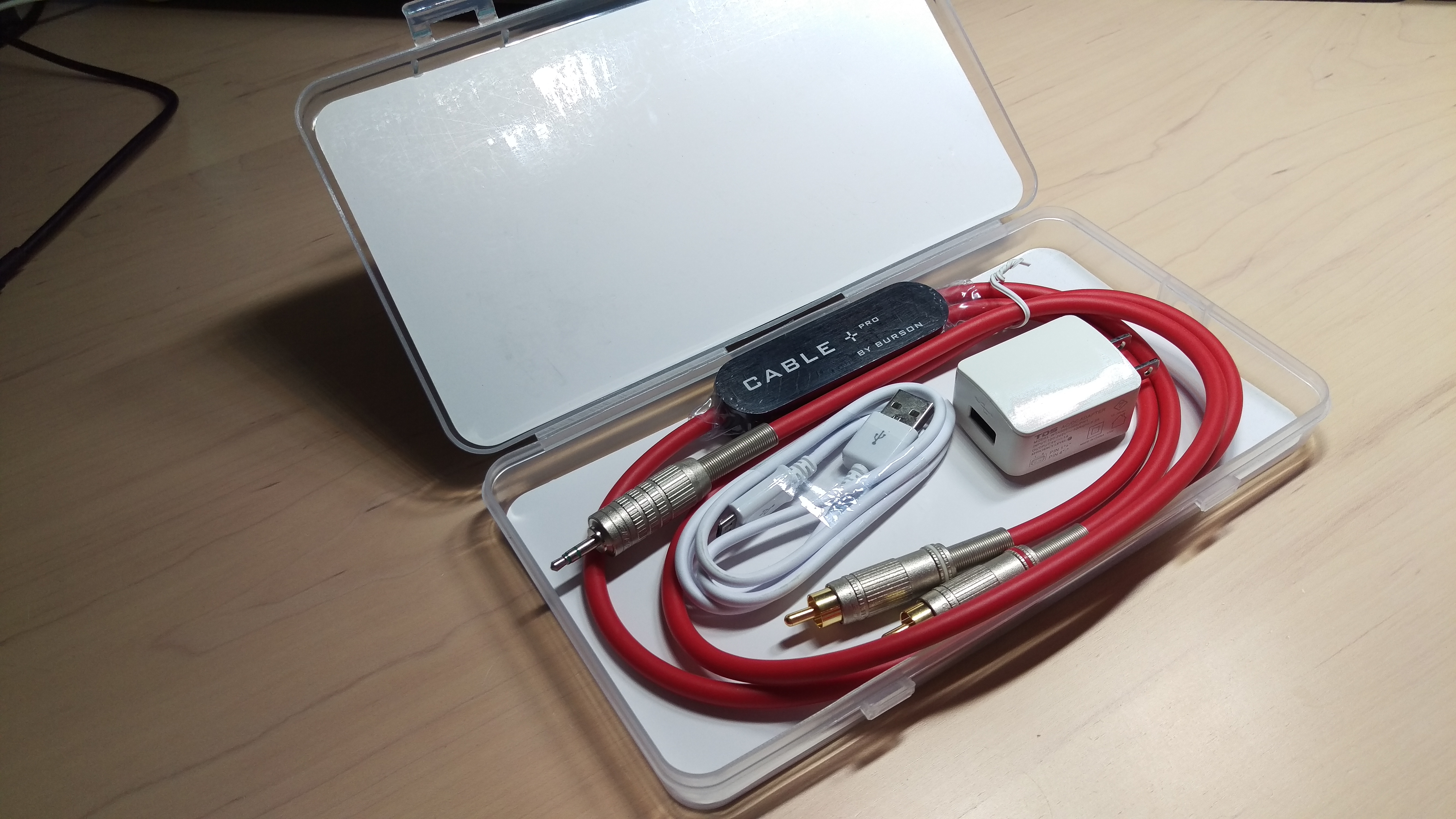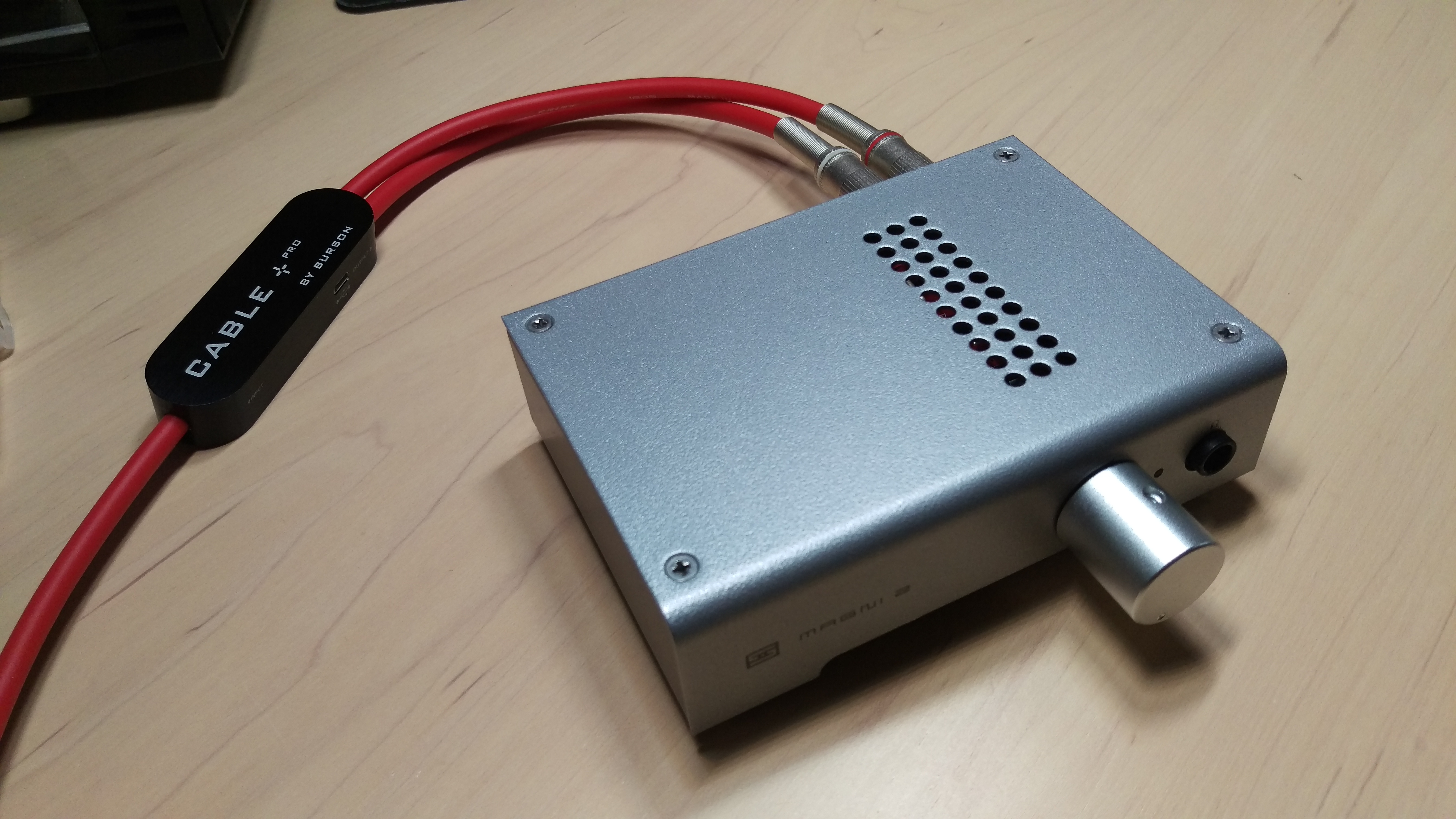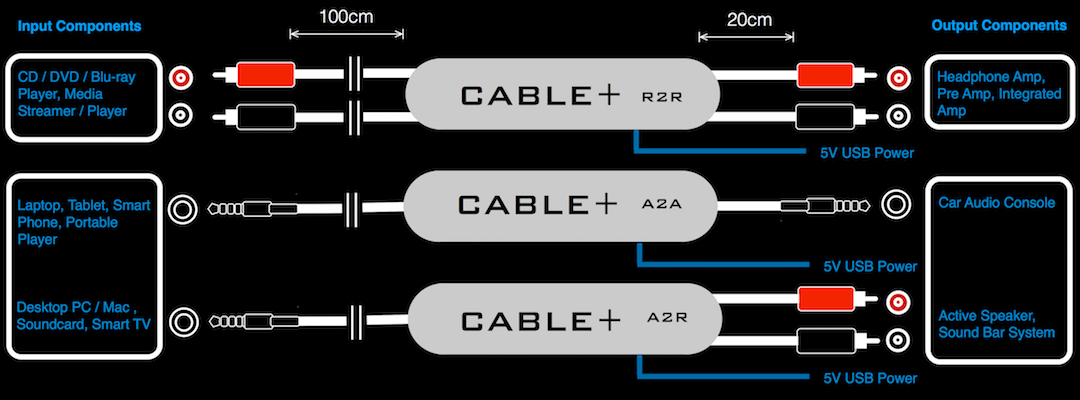Disclaimer: This sample was provided by Bhav from Burson Audio. I'm not affiliated with Burson Audio in any way. It was provided only to get an honest review.
I’m fairly new to the world of headphones and this is my first official review of any component. The version of the Burson Cable I be reviewing is the Cable+ Pro R2R (RCA to RCA). I’m using the Chord Hugo 2 as my DAC feeding my iFi Pro iCan headphone amp. The headphones I’m using for this review is the Hifiman HE1000 V2’s due to their ultra-transparency and detail retrieval. My hopes in using this combo is to discern any change in my audio chain that I haven’t heard before. My normal interconnect cable is the Kimber Kable GQ-Mini AG. I also have my laptop going into the iFi Audio Micro USB 3.0 which eliminates any noise. My music source is TIDAL.
Packaging…..
The Cable+ Pro comes in a basic plastic locking case. It’s sealed and very secure. On the cover you get where the cable is made and type of cable you’re getting. You also get where to register your cable for warranty coverage and the length of the warranty.

On the inside you get the Cable+ Pro, a USB-A to Micro USB-B, and a charger. It’s everything you need to get the cable working. This is not how the cable comes packaged. I had removed the contents in order to review it and placed them back in so that everyone can get an idea of what's included.

About the Cable…..
Burson has designed this cable to eliminate impedance mismatching. To make it as simple as possible that is taking the output impedance of any source and making it equal to the input impedance of any amplifier. It sounds simple but Burson has put a lot of engineering into this cable. Here’s a look at the internals from Burson’s site:

The Cable+ Pro acts as an audio buffer in your music chain and I couldn’t detect any signal or sound delay while using the cable. The Cable+ Pro is an active cable meaning you need to power the cable in order to reap its stated benefits. Quoting Burson those benefits are:
Once the Cable+ is in place, sonic details once lost, will be fully reproduced to create a complete experience. Play familiar – very familiar – material, and you will hear the finest details fully resolved, while the fundamentals take on a new level of life and solidity. That “harsh digital sound” replaced by a wider and more three-dimensional soundstage.
After some listening I can hear a difference.
Sound…..

I have to be honest, I didn’t know what to expect with the Cable+ Pro. What I was hearing was more detail and a more open, clearer, detailed sound than I ever heard out of my system. Listening with my HE1K V2’s with the Cable+ Pro in my system I’ve never heard them sound so open, airy, and transparent. The bass was detailed, layered, and had a little more impact. The background was completely silent and my HE1K V2’s sounded more 3D like. It was amazing to hear. These improvements in my system alone makes the Cable+ Pro a worthy addition.
Another thing I wanted to note was the increase in perceived gain. Having an active cable in my system really push the sound forward. When I went back to using my Kimber Kable GQ-Mini AG the difference the Cable+ Pro was making in my system became even more obvious. The Kimber Kable GQ-Mini AG sounded a little thin. I was missing the weighty sound the Cable+ Pro added. The fullness, the added body, and the rich picture the Cable+ Pro was painting seem to go away when I switched back to my Kimber Kable GQ-Mini AG. I didn't wan to believe my Kimber Kable GQ-Mini AG could be outdone or bested but I had to give the Cable+ Pro credit. It really did perform outstanding in my system.
Conclusion…..
For $199, the Cable+ Pro does offer the discerning audio enthusiast a system tweak for the better. Once you here what the Cable+ Pro can do I think you’ll be pleasantly surprised. I'm giving the Cable+ Pro a 5 out of 5. Great job Burson!
I’m fairly new to the world of headphones and this is my first official review of any component. The version of the Burson Cable I be reviewing is the Cable+ Pro R2R (RCA to RCA). I’m using the Chord Hugo 2 as my DAC feeding my iFi Pro iCan headphone amp. The headphones I’m using for this review is the Hifiman HE1000 V2’s due to their ultra-transparency and detail retrieval. My hopes in using this combo is to discern any change in my audio chain that I haven’t heard before. My normal interconnect cable is the Kimber Kable GQ-Mini AG. I also have my laptop going into the iFi Audio Micro USB 3.0 which eliminates any noise. My music source is TIDAL.
Packaging…..
The Cable+ Pro comes in a basic plastic locking case. It’s sealed and very secure. On the cover you get where the cable is made and type of cable you’re getting. You also get where to register your cable for warranty coverage and the length of the warranty.

On the inside you get the Cable+ Pro, a USB-A to Micro USB-B, and a charger. It’s everything you need to get the cable working. This is not how the cable comes packaged. I had removed the contents in order to review it and placed them back in so that everyone can get an idea of what's included.

About the Cable…..
Burson has designed this cable to eliminate impedance mismatching. To make it as simple as possible that is taking the output impedance of any source and making it equal to the input impedance of any amplifier. It sounds simple but Burson has put a lot of engineering into this cable. Here’s a look at the internals from Burson’s site:

The Cable+ Pro acts as an audio buffer in your music chain and I couldn’t detect any signal or sound delay while using the cable. The Cable+ Pro is an active cable meaning you need to power the cable in order to reap its stated benefits. Quoting Burson those benefits are:
Once the Cable+ is in place, sonic details once lost, will be fully reproduced to create a complete experience. Play familiar – very familiar – material, and you will hear the finest details fully resolved, while the fundamentals take on a new level of life and solidity. That “harsh digital sound” replaced by a wider and more three-dimensional soundstage.
After some listening I can hear a difference.
Sound…..

I have to be honest, I didn’t know what to expect with the Cable+ Pro. What I was hearing was more detail and a more open, clearer, detailed sound than I ever heard out of my system. Listening with my HE1K V2’s with the Cable+ Pro in my system I’ve never heard them sound so open, airy, and transparent. The bass was detailed, layered, and had a little more impact. The background was completely silent and my HE1K V2’s sounded more 3D like. It was amazing to hear. These improvements in my system alone makes the Cable+ Pro a worthy addition.
Another thing I wanted to note was the increase in perceived gain. Having an active cable in my system really push the sound forward. When I went back to using my Kimber Kable GQ-Mini AG the difference the Cable+ Pro was making in my system became even more obvious. The Kimber Kable GQ-Mini AG sounded a little thin. I was missing the weighty sound the Cable+ Pro added. The fullness, the added body, and the rich picture the Cable+ Pro was painting seem to go away when I switched back to my Kimber Kable GQ-Mini AG. I didn't wan to believe my Kimber Kable GQ-Mini AG could be outdone or bested but I had to give the Cable+ Pro credit. It really did perform outstanding in my system.
Conclusion…..
For $199, the Cable+ Pro does offer the discerning audio enthusiast a system tweak for the better. Once you here what the Cable+ Pro can do I think you’ll be pleasantly surprised. I'm giving the Cable+ Pro a 5 out of 5. Great job Burson!






























































 That's my position when you ask me what I think about hi-end audio cables. I'm a strong believer that there is no audible difference between a $5 oxygen free copper cable and a $500 oxygen free copper cable and I still am. Before even trying Burson Audio Cable+ Pro I had to prove my point on ordinary cables. So I bought the cheapest cable I could find for $5 to compare it with some expensive cables in my own inventory, won't call names though. I also ordered a handful of different adaptor cables and splitters for various connectivity options.
That's my position when you ask me what I think about hi-end audio cables. I'm a strong believer that there is no audible difference between a $5 oxygen free copper cable and a $500 oxygen free copper cable and I still am. Before even trying Burson Audio Cable+ Pro I had to prove my point on ordinary cables. So I bought the cheapest cable I could find for $5 to compare it with some expensive cables in my own inventory, won't call names though. I also ordered a handful of different adaptor cables and splitters for various connectivity options.




















